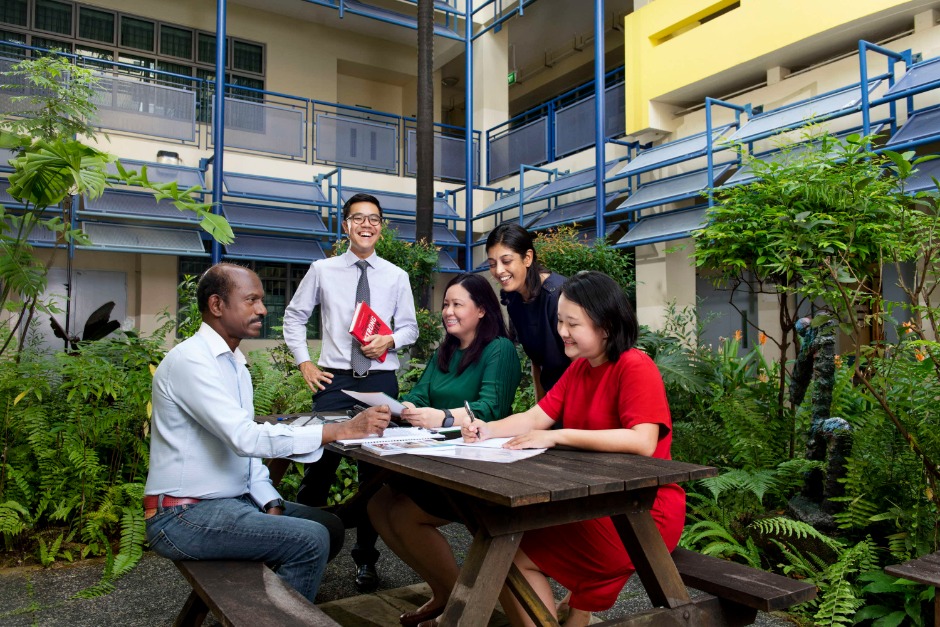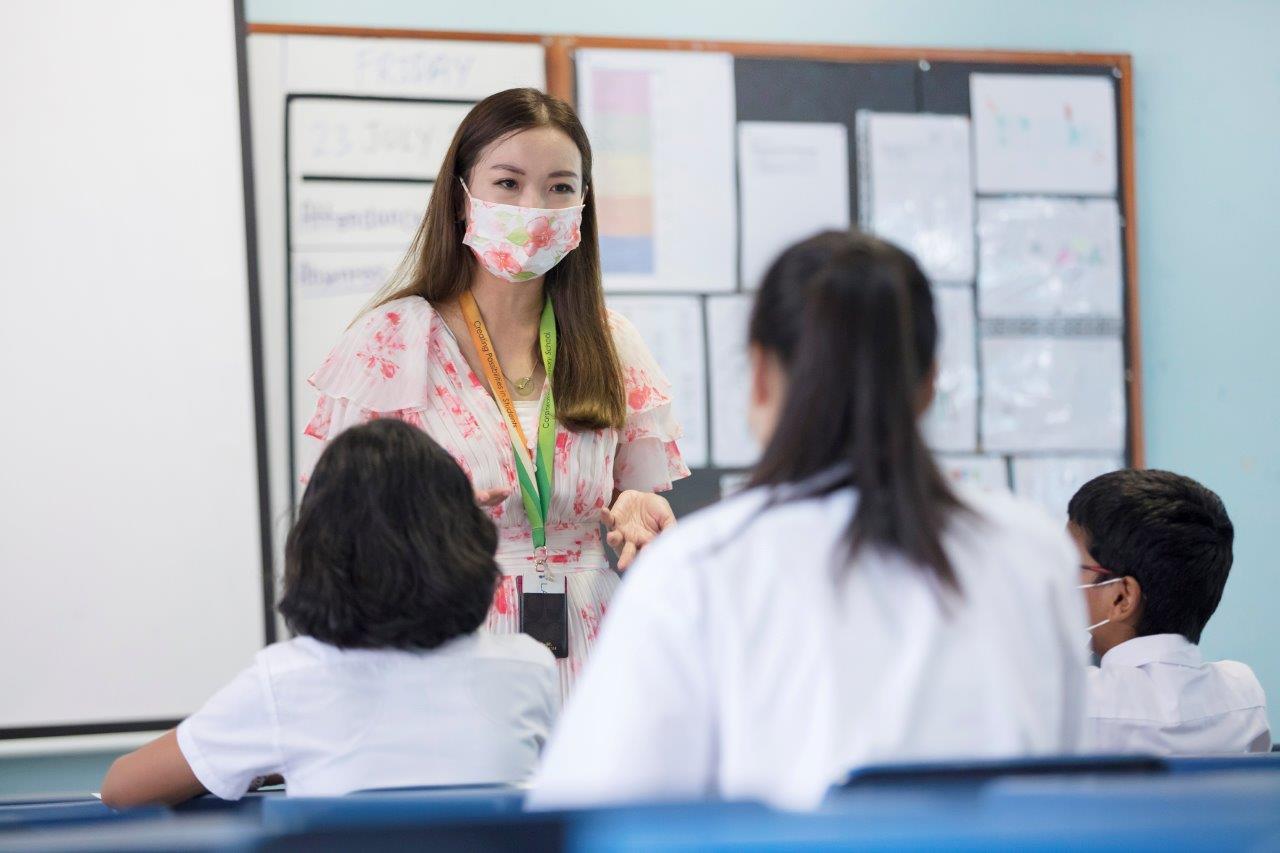Learning Support for Pupils Struggling with English Literacy
28 Jan 2013
Phonic patterns are used in the Learning Support Programme (LSP), which aims to provide early intervention for pupils who are weak in English literacy.
Did you know that “oi” is often found in the middle of English words, while “oy” is mostly at the back?
Literacy strategies, such as learning the above phonogram pattern, are taught to Primary One and Two pupils in the Learning Support Programme (LSP). LSP is an early intervention effort for those with weak oral and reading skills in the English Language.
“At first, they would struggle. After the intervention, they would start to apply the strategies to decode unfamiliar words, spell and gain fluency in reading,” says Mrs Tan Lee Joon, who has been the Learning Support Coordinator (LSC) at Northland Primary School for the past ten years.
According to the recently released results of the Progress in International Reading Literacy Study (PIRLS) 2011, the percentage of Singapore students who performed below or just attained the ‘low’ benchmark decreased from 24% in 2001 to 13% in 2011. The effectiveness of the LSP is supported by the significant progress seen in academically-weaker students.
Selection for the Learning Support Programme (LSP)
At the beginning of Primary One, pupils are assessed according to Early Literacy Indicators (ELI). Those who do not meet the criteria will be placed in the LSP, a 30-minute session every day. With only eight to ten pupils in each class, more attention is given to equipping pupils with basic literacy skills so they can access learning in a regular classroom.
“One of my Primary One pupils could speak well for her age and the other teachers were surprised when they found out that she needed to be in the LSP. I double checked and verified that the pupil was unable to read or identify words,” said Mrs Tan.
After one year of going through the LSP, Mrs Tan is confident that this pupil of hers has caught up with the Primary One standard and will be ready to cope with the usual classes after Primary Two.
Strategies in the LSP Classroom
Learning Support Coordinators trace the letters in the air together with the children as they spell a word aloud. This method of “sky writing” is used to teach words that cannot be decoded by sound-letter relationships.
Decoding is a common phonic strategy used to teach children to read and spell according to letter-sound relationships. Primary One pupils attending the LSP will be taught how to combine individual sounds to form simple words. For example, the word “bat” is split into three phonic sounds according to their letters “b”, “a” and “t”. When the three sounds are blended together, the word “bat” is pronounced”. In Primary Two, they learn to read longer words by dividing them into syllables.
However, some words cannot be decoded as they do not follow the phonic pattern, such as “a”, “the”, “what” and “should”. High frequency words, which are words that appear commonly, often fall into this category and need to be taught differently, such as through sky writing, which requires children to write letters in the air as they spell the word aloud, and the Look, Say, Cover, Write and Check method. This method helps children to actively connect the word they see with how it is pronounced and spelt.
“But teaching words in isolation is not meaningful,” said Mrs Tan.
In Primary Two, pupils in the Learning Support Programme will progress from learning about sentences to passages.
In Primary One, pupils learn to use words in sentences and move on to passages in Primary Two. Teachers will also test their comprehension of the text and bring in STELLAR books in the second year to support what is being taught in the usual classes before they are taken out from the LSP.
Learning Support Coordinators (LSCs), like Mrs Tan, are required to undergo training and mentorship, so they can be skilled in using the LSP strategies to help children who are weak in English Language literacy. Mrs Tan is also currently mentoring two LSCs in other schools.
“More than twenty years ago, when I was a teacher, I used to have a class of 40 pupils. Now as an LSC with a smaller class, I can give more attention to those who could do with more support.”
Effectiveness of LSP
An average of 50% to 60% of students in Northland Primary School usually catch up with their cohort and do not need to continue with the LSP programme after Primary One.
“One of my pupils could hardly read even 10% of high frequency words at the beginning, and was unable to pronounce two sounds together. After one term, he was able to blend three sounds and by the end of primary one, he could read 90% of high frequency words,” said Mrs Tan, who continues to work with the child.
According to PIRLS, in addition to academically weaker students performing better, Singapore students have also made improvements with their “interpreting, integrating and evaluating” ability, which are considered higher order skills.
“With the LSP, everyone will get to progress, but at their own speed,” said Mrs Tan.
Singapore students were ranked among the top few internationally and improvements were observed across all abilities in the Progress in International Reading Literacy Study (PIRLS) 2011. The study was carried out among randomly selected Primary 4 students from all primary schools.


.jpg)

.jpg)
